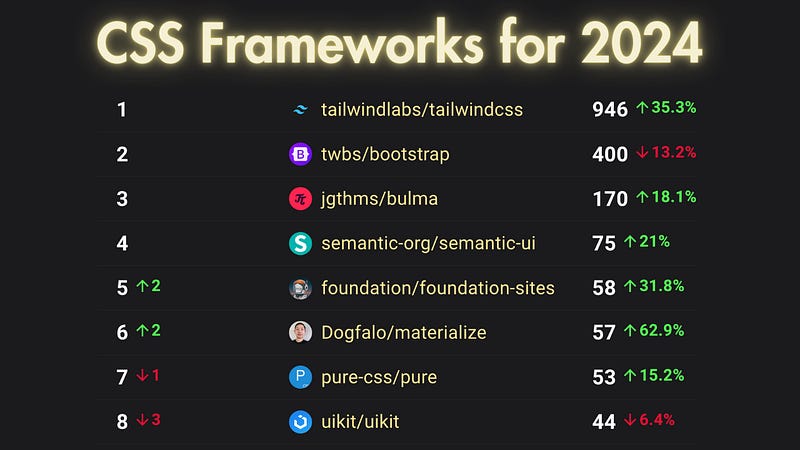Index Surge: Amplifying Your Insights
Stay updated with the latest trends and news across various industries.
Frameworks That Make You Question Your CSS Choices
Discover frameworks that challenge your CSS decisions and elevate your web design game. Your choices may never look the same!
How CSS Frameworks Challenge Your Design Decisions
CSS frameworks have revolutionized web design, providing developers with a structured and efficient way to create responsive layouts. However, this convenience often leads to a challenge in design decisions. By relying on predefined styles and components, designers may find themselves constrained by the framework’s limitations, inadvertently sacrificing creativity for conformity. For instance, while frameworks like Bootstrap offer a robust grid system, they can sometimes promote a cookie-cutter aesthetic that diminishes brand uniqueness.
Moreover, the ease of integration that CSS frameworks provide can also impact the user experience. Designers might prioritize speed and efficiency over thoughtful design elements, leading to a site that feels generic. This challenge compels designers to balance the advantages of using a framework with the need to maintain individuality in their creations. It prompts critical questions about when to leverage these tools and when to customize or even reinvent design elements to achieve the desired level of engagement and appeal.

Top 5 CSS Frameworks That Redefine Styling Principles
In the ever-evolving landscape of web development, CSS frameworks have emerged as essential tools that not only streamline the design process but also redefine styling principles. Among the myriad options available, certain frameworks stand out for their unique attributes and functionalities. The following are the Top 5 CSS Frameworks that have significantly impacted the way developers approach styling, enhancing both usability and aesthetic appeal.
- Bootstrap - Known for its responsive grid system and pre-designed components, Bootstrap allows developers to create mobile-first websites with ease.
- Tailwind CSS - Tailwind's utility-first approach empowers developers to build custom designs without leaving the HTML.
- Foundation - Developed by ZURB, Foundation focuses on flexibility and customization, making it a popular choice for professional developers.
- Bulma - With a modern syntax, Bulma offers a clean and simple design that is easy to implement and customize.
- Semantic UI - Emphasizing human-friendly HTML, Semantic UI helps create responsive layouts using simple class names.
Are You Making the Right Choices? Evaluating CSS Frameworks
When it comes to web development, choosing the right CSS framework can significantly impact your project's success. With numerous options available, it's crucial to evaluate each framework based on your specific needs, such as responsiveness, ease of use, and community support. Popular frameworks like Bootstrap, Tailwind CSS, and Foundation each offer unique features and benefits. Consider creating a comparison list to help you weigh the pros and cons of each framework. This will enable you to make informed decisions that align with your project's objectives.
Another important aspect to consider is how a CSS framework integrates into your existing workflow. For instance, if your team is already familiar with a particular framework, adopting a different one might cause unnecessary delays and learning curves. Additionally, think about the long-term implications of your choice. Ask yourself: Is this framework actively maintained? Does it have a robust ecosystem of plugins and components? Taking the time to thoroughly evaluate these factors will ensure you make the right choices for your development projects.